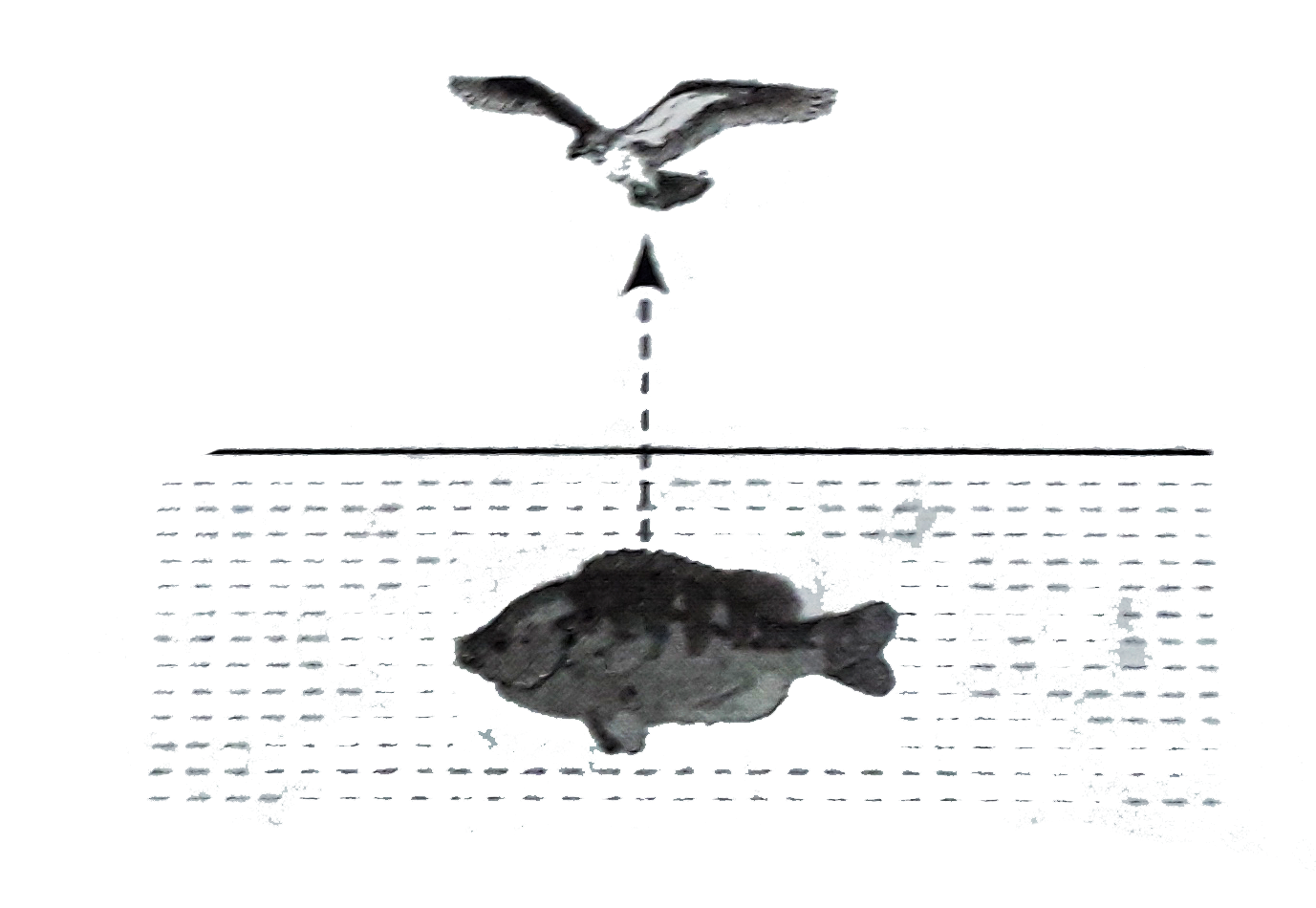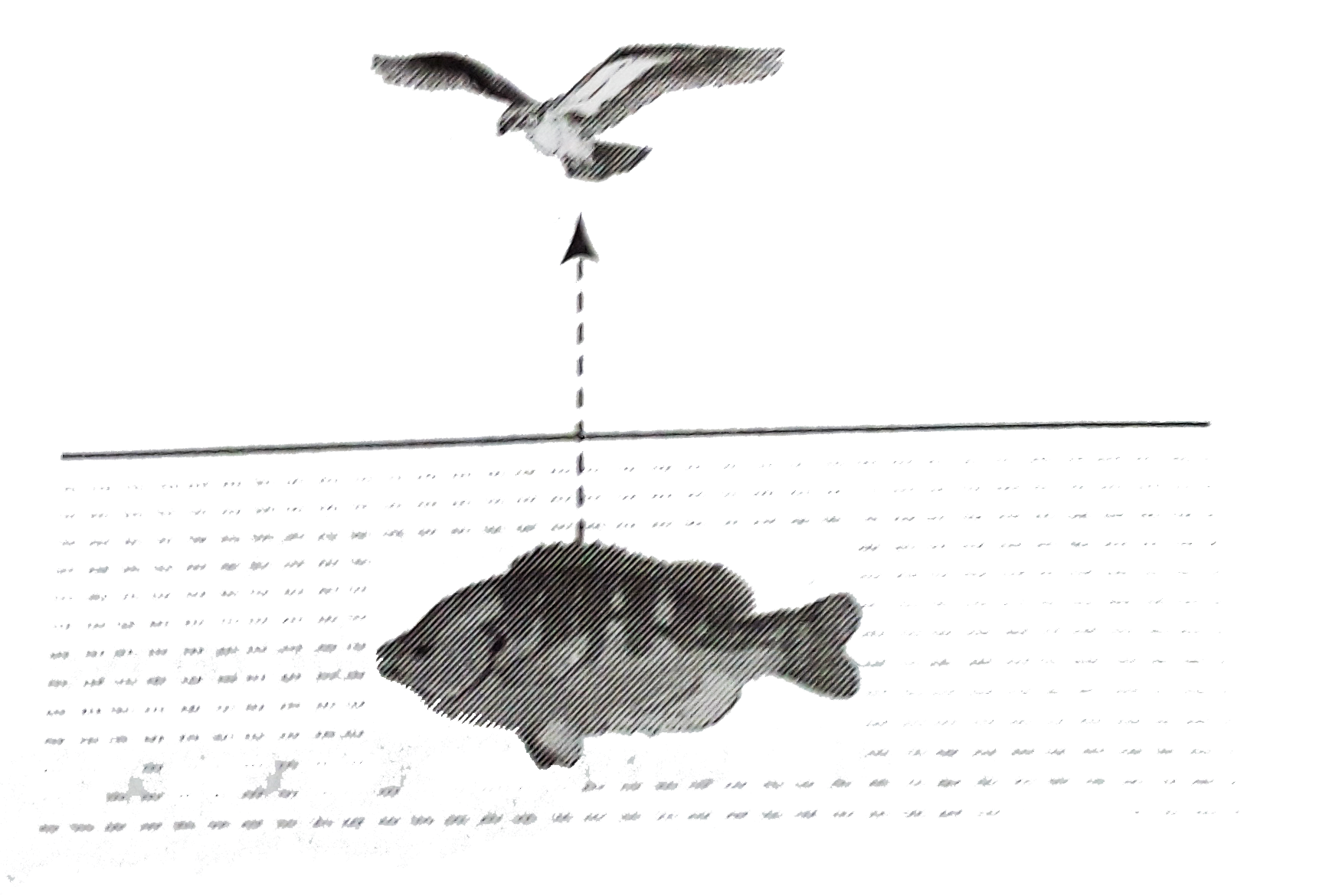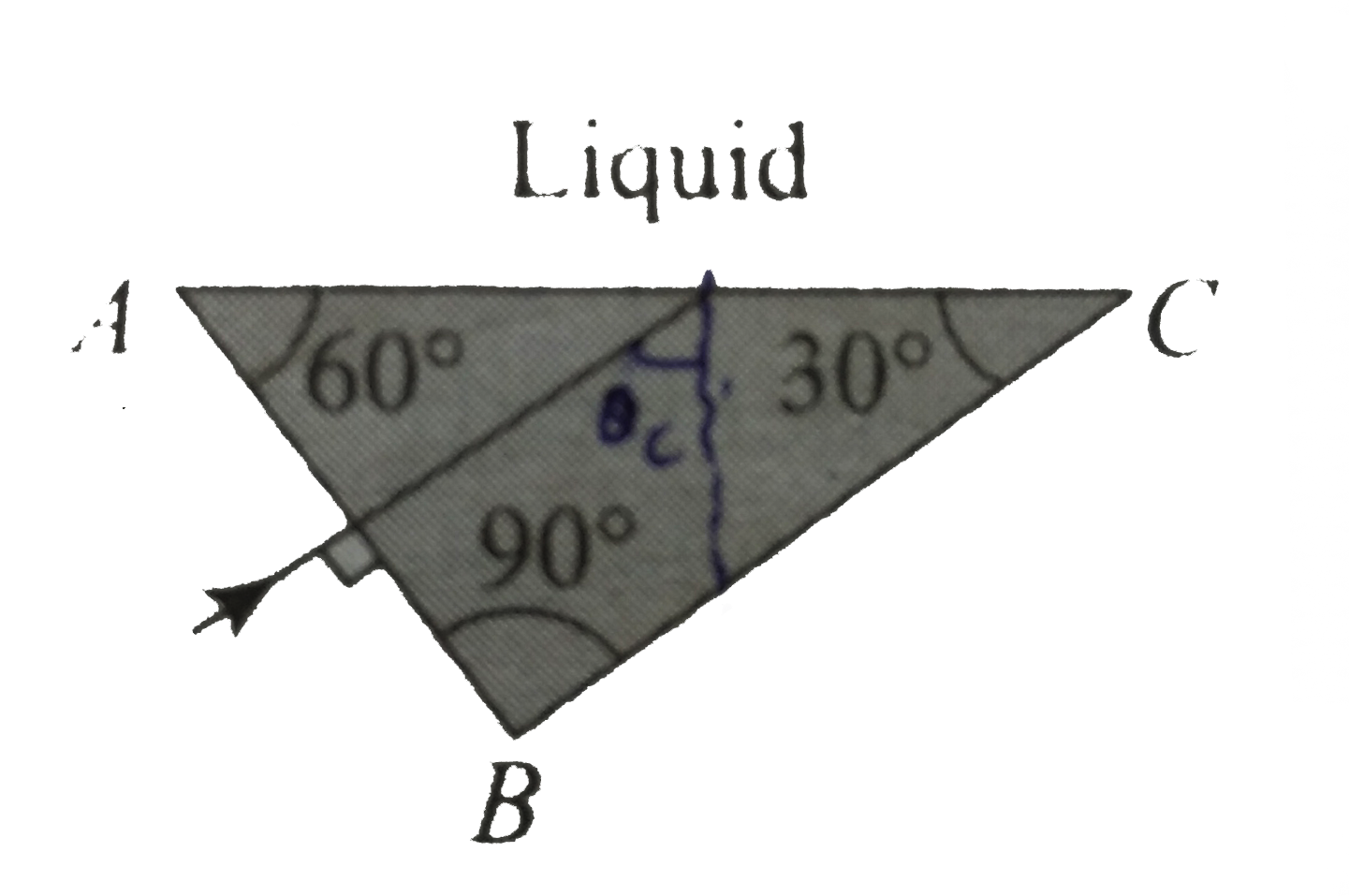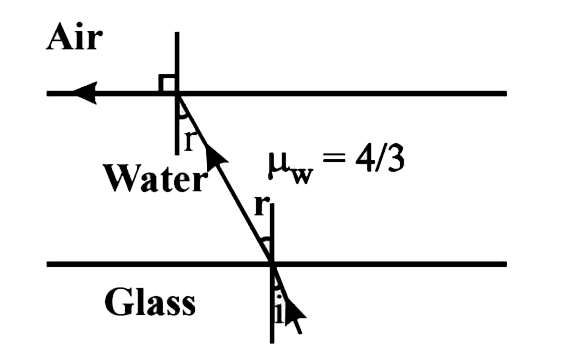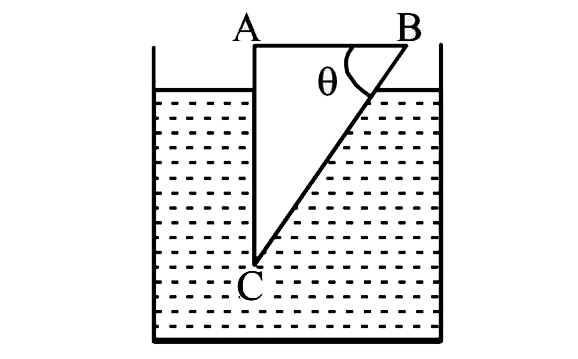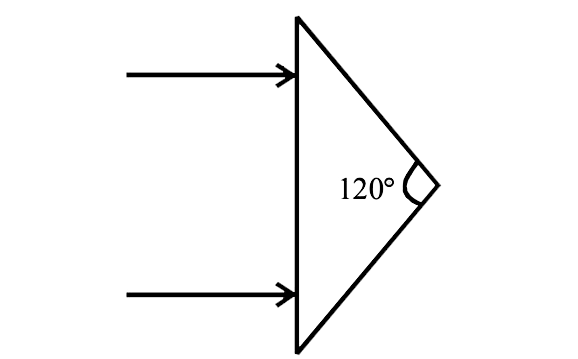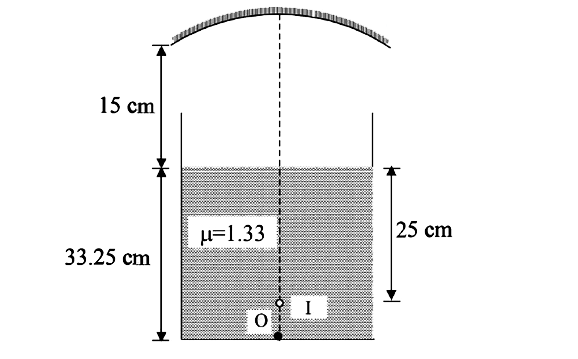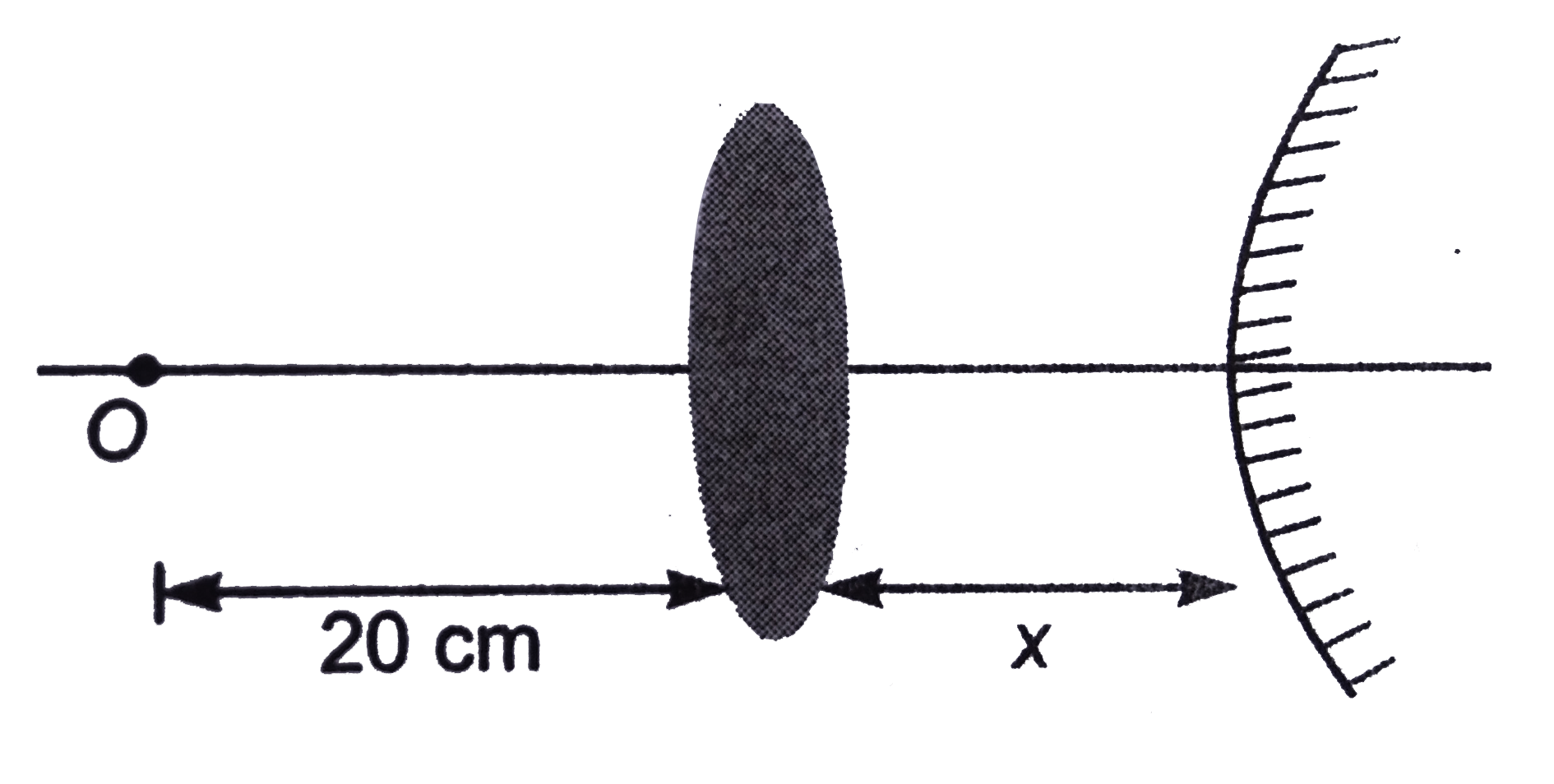Problems Based On Mixed Concepts from A2Z PHYSICS Chapter 9 GEOMETRICAL OPTICS for Class 12
| Class 12 | PHYSICS |
| Chapter | GEOMETRICAL OPTICS |
| A2Z PHYSICS | Problems Based On Mixed Concepts |
| Medium | English |
| Academic Year | 2023-2024 |
Question 6
A combination of two thin lenses with focal lengths f1 and f2 respectively forms and image of distant object at distance 60cm when lenses are in contact. The position of this image shifts by 30cm towards the combination when two lenses are separated by 10cm. The corresponding values of f1 and f2 areView SolutionQuestion 7
A point source S is placed at the bottom of different layers as shown in figure. The refractive index of bottom-most layer is μ0. The refractive index of any other upper layer is
μ(n)=μ0−μ04π−18 where n=1,2,.....
A ray of light starts from the source S as shown. Total internal reflection takes place at the upper surface of the layer having n equal to
 View Solution
View SolutionQuestion 10
A point source of light B is placed at a distance L in front of the centre of a mirror of width d hung vertically on a wall. A man walks in front of the mirror along a line parallel to the mirror at a distance 2L from it as shown in fig. The greatest distance over which he can see the image of the light source in the mirror is
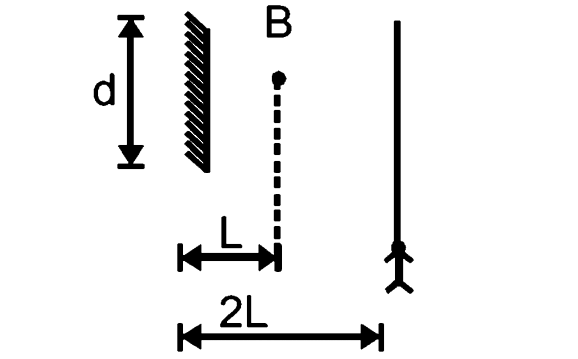 View Solution
View SolutionQuestion 11
Two plane mirrors A and B are aligned parallel to each other, as shown in the figure. A light ray is incident at an angle 30degree at a point just inside one end of A. The plane of incidence coincides with the plane of the figure. The maximum number of times the ray undergoes reflections (including the first one) before it emerges out is
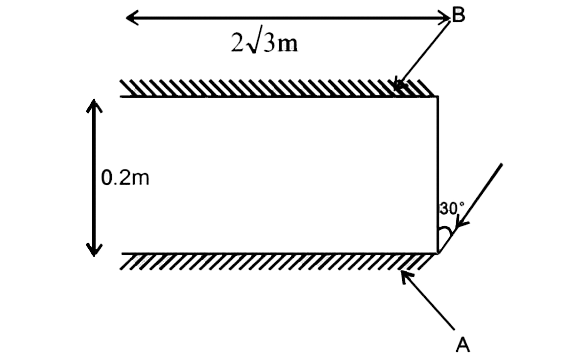 View Solution
View SolutionQuestion 12
A rectangular slab ABCD, of refractive index n1 , is immersed in water of refractive index n2(n1<n2). A ray of light is incident at the surface AB of the slab as shown in Fig. Find the maximum value of angle of incidence αmax, such that the ray comes out only from the other surface CD.
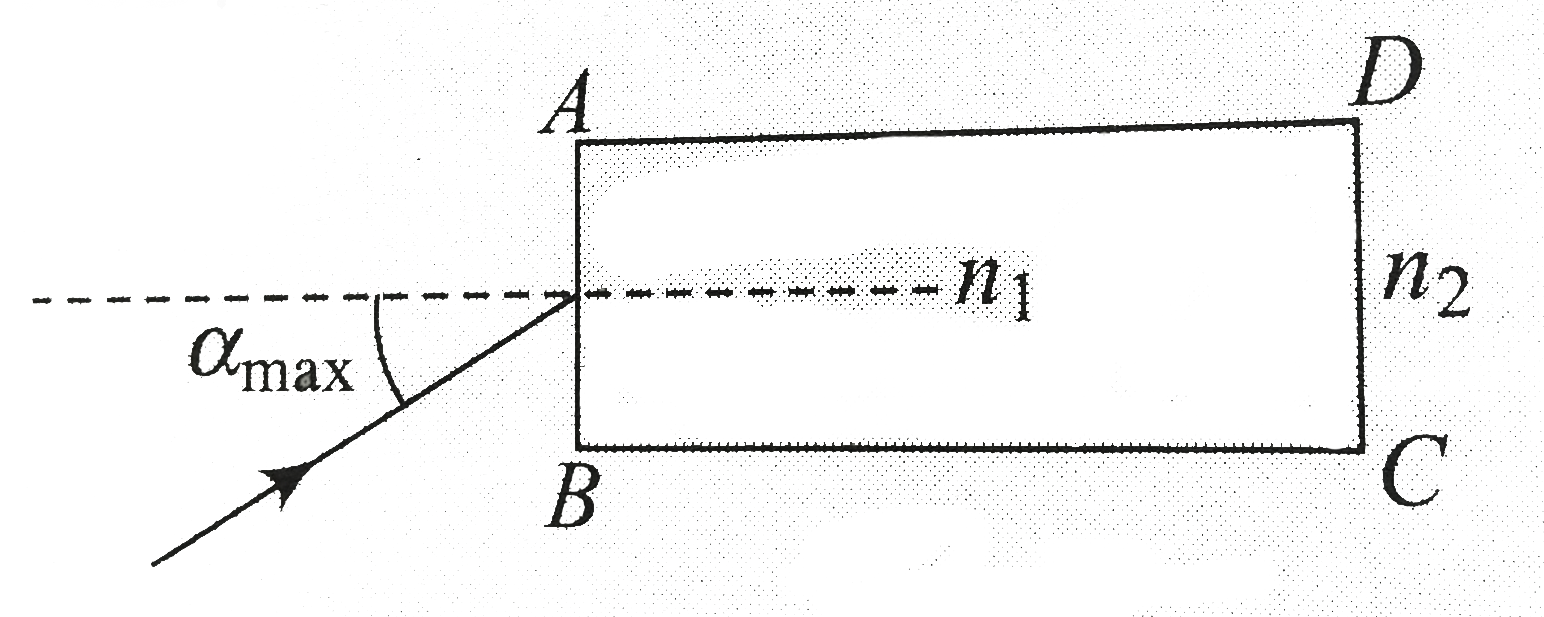 View Solution
View SolutionQuestion 13
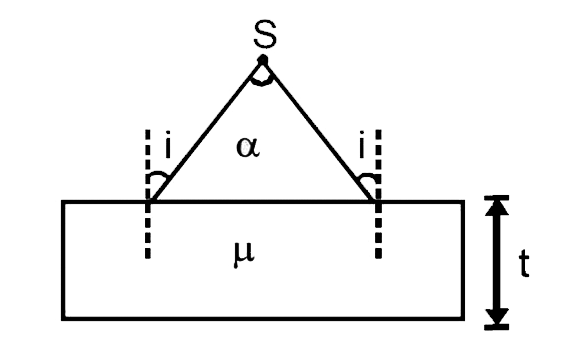
A diverging beam of light from a point source S having divergence angle α, falls symmetrically on a glass slab as shown. The angles of incidence of the two extreme rays are equal. If the thickness of the glass slab is t and the refractive index n, then the divergence angle of the emergent beam is View SolutionQuestion 14
An observer can see through a pin-hole the top end of a thin rod of height h, placed as shown in the figure. The beaker height is 3h and its radius h. When the beaker is filled with a liquid up to a height 2h, he can see the lower end of the rod. Then the refractive index of the liquid is
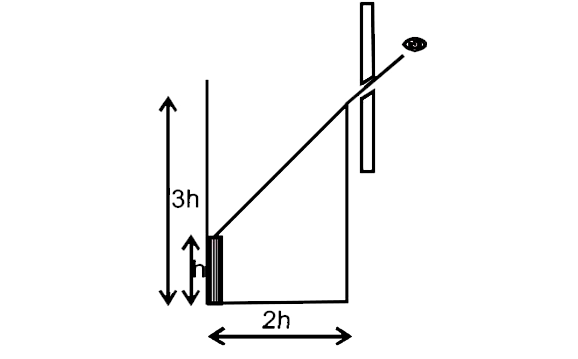 View Solution
View SolutionQuestion 19
The size of the image of an object, which is at infinity, as formed by a convex lens of focal length 30 cm is 2 cm. If a concave lens of focal length 20 cm is placed between the convex lens and the image at a distance of 26 cm from the convex lens, calculate the new size of the imageView SolutionQuestion 22
A concave mirror is placed on a horizontal table, with its axis directed vertically upwards. Let O be the pole of the mirror and C its centre of curvature. A point object is placed at C. It has a real image, also located at C. If the mirror is now filled with water, the image will be.View SolutionQuestion 24
An object is placed in front of a convex mirror at a distance of 50cm. A plane mirror is introduced covering the lower half of the convex mirror. If the distance between the object and the plane mirror is 30cm, it is found that there is no parallax between the images formed by the two mirrors. What is the radius of curvature of the convex mirror? View SolutionQuestion 25
A concave mirror of focal length 10cm and a convex mirror of focal length 15cm are placed facing each other 40cm apart. A point object is placed between the mirrors, on their common axis and 15cm from the concave mirror. Find the position and nature of the image produced by successive reflections, first at the concave mirror and then at the convex mirror. View SolutionQuestion 32
A point object is placed on the optic axis of a convex lens of focal length f at a distance of 2f to the left of it. the diameter of the lens is 'd' . An eye is placed at a distance of 3f to the right of the lens and a distance h below the optic axis. The maximum value of h to see the image is View SolutionQuestion 35
Two thin symmetrical lenses of different nature and of different material have equal radii of curvature R=15cm. The lenses are put close together and immersed in water (μw=4/3) . The focal length of the system in water is 30cm. The difference between refractive indices of the two lenses isView Solution
